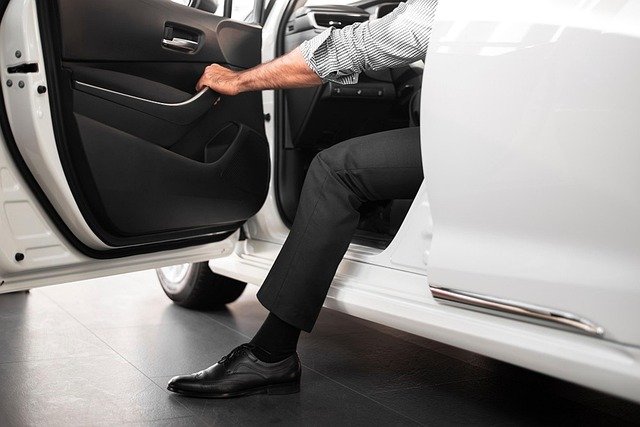Traveling with Infants and Toddlers: Secure Seating Tips
Planning travel with young children requires careful attention to seating, comfort, and legal requirements. This article summarizes practical, safety-focused guidance for selecting and using car seats for infants and toddlers, covering harness use, installation checks, seat positions, and routine maintenance to help caregivers prepare for trips of any length.

Traveling with young passengers means balancing safety, comfort, and convenience. Whether you are driving across town or taking a longer trip, choosing the right seat and ensuring proper installation are critical for the safety of your child, infant, or toddler. This overview explains when to use rearfacing and forwardfacing seats, how to fit harnesses correctly, what to check during inspections, and how to maintain seats over time. It also highlights how to manage comfort and practical issues during travel while keeping up with regulations that apply in different areas.
Child age and seat choice
Selecting a seat appropriate to your child’s age, weight, and height is the first step. Infants typically require rearfacing, convertible, or infant-only seats rated for the newborn weight range; toddlers may continue rearfacing in convertible seats until they exceed the seat’s rearfacing limits. As children grow, they transition to forwardfacing harness seats and eventually to boosters. Regulations vary by jurisdiction, so confirm local regulations and recommended age/size ranges before changing seat types. Comfort and support for the child are important, but safety requirements and correct fit must drive decisions.
Infant and rearfacing guidelines
Rearfacing provides better support for an infant’s head, neck, and spine in a crash. Keep infants rearfacing as long as the seat’s height and weight limits allow, following manufacturer guidance. Proper harness positioning is essential: the harness should be at or below the infant’s shoulders and snug enough that you cannot pinch excess webbing at the shoulder. Ensure the recline angle is appropriate to maintain an open airway. For travel, use seats with easy-to-adjust recline and consider head supports designed for newborns, but do not add aftermarket items that haven’t been tested with the seat.
Toddler transition to forwardfacing and booster
Toddlers should remain in a harnessed seat until they exceed the forwardfacing limits of that seat. Forwardfacing seats with a top tether reduce forward movement in a crash; use the tether whenever possible. When the child outgrows the harnessed seat by height or weight, transition to a booster that positions the vehicle lap and shoulder belt correctly. Boosters are for children who have the size and maturity to sit properly for the full ride. Always refer to your seat manual and local regulations about minimum ages and measurements for each stage.
Harness, installation, and isofix use
A correctly installed harness and secure attachment method are critical. Many modern seats support ISOFIX (also known as LATCH in some regions) for straightforward anchoring; use ISOFIX when available and compatible with your vehicle for a stable connection. Whether you use a seatbelt or ISOFIX, follow the installation instructions precisely: tighten the lower anchors or belt to minimize movement, confirm the seat does not move more than one inch side-to-side at the belt path, and adjust harness straps so they are snug but not restrictive. Regularly practice installation to ensure consistency before trips.
Inspection, maintenance, and regulations
Regular inspection and maintenance extend safety and reliability. Check webbing for frays, buckles for proper latching, and shell integrity for cracks or damage. Replace seats after moderate-to-severe collisions or if they’re past the manufacturer’s expiration date. Keep a record of purchase and registration with the manufacturer to receive safety notices. Understand and comply with regional regulations on car seats and child restraint systems—requirements for harness use, rearfacing duration, and booster eligibility differ by area. When in doubt, consult local services or certified fitting stations in your area for hands-on inspection.
Travel comfort and practical tips
Making travel comfortable helps children remain properly seated. Use sun shades, breathable fabrics, and age-appropriate neck supports compatible with the seat. Plan regular stops on longer journeys so toddlers can move and infants can be checked without disturbing harness settings. Pack a small kit for quick inspections: a strap cutter for emergencies, a spare tether strap if compatible, and the car seat manual (a digital copy works) for reference. Avoid loose objects that could become projectiles and store toys securely. Balance comfort items with safety—do not add unapproved padding or accessories that alter harness fit.
This article is for informational purposes only and should not be considered medical advice. Please consult a qualified healthcare professional for personalized guidance and treatment.
Conclusion Consistent attention to correct seat selection, secure installation, routine inspection, and age-appropriate transitions helps protect infants and toddlers during travel. Combining adherence to regulations, proper harness use, and basic maintenance practices with practical comfort measures will support safer, more comfortable trips for young passengers and caregivers alike.






